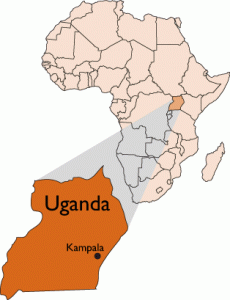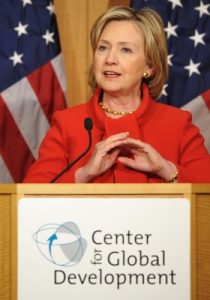Blog
Posted on January 15, 2010
by Global Washington Education Coordinator Mariah Ortiz and GW intern, Pat Orozco
Recently, a team of global education volunteers has been convened to support the international education work of Global Washington members. Washington State has a dynamic global education community! Many organizations work together to shape culturally competent citizens, who will take full advantage of our interconnected world and form a strong foundation for the state’s dynamic global development field. Global education is the tide that lifts the international development industry’s many boats.
This is the first of many upcoming blogs, which will highlight global education organizations, schools, business, nonprofits and other public agencies throughout the state. You will be hearing from many of our wonderful global ed volunteers: Michelle, Kelly C., Kelly T., Lindsay, Luke, Pat and Sheel. We also welcome any story ideas or news submissions for inclusion in the blog! Email Mariah Ortiz with your ideas!
What kind of international education project has Global Washington been working on?
· Global Learning Goals
The Washington State Global Learning Goals are the result of collaboration between Global Washington and faculty from seven Washington State institutions of higher education. The goals express Washington State’s support for global education. They serve three major objectives: (1) bring statewide attention to the importance of producing globally-competent graduates; (2) provide a platform of common goals for Washington colleges and universities that can be adapted to fit individual institutional missions; and (3) position Washington State as a leader in global learning.
28 colleges and universities in the state have endorsed the Global Learning Goals so far. The goal is for all Washington State college and university presidents to endorse the Global Learning Goals. We are reaching out to institutions, advocating for their endorsement of the goals, and inclusion in school policies and curriculum.
· Metrics for Assessing Global Learning Goals Implementation
In collaboration with the Global Washington Educational Advisory Committee, the Global Ed team is researching ways to assess the impact of programs that support the Global Learning Goals. We are researching best practices for measuring global learning programs. Our aim is to identify a clear, easily adoptable and uniform set of metrics and tools that higher education institutions can use to assess the progress of their global efforts.
· Updating the International and Global Learning Inventory
Global Washington published a report in 2007 that provides detailed information about the international global learning opportunities available to students at Washington’s four-year degree granting colleges and universities. The Inventory shows the depth, breadth and innovation of the state’s formal and informal global education programs. We are updating the report to make the content easily and publicly accessible and more comprehensive by including more higher learning institutions.
Posted on January 11, 2010
Here’s a roundup of interesting development policy-related news from the last couple of weeks. Did we miss anything? Let us know in the comments.
Secretary of State Clinton made a speech about the future of development policy last Wednesday, and there is no shortage of commentary- from William Easterly, Nicholas Kristof, Paul O’Brien of Oxfam, Chris Blattman, Devex, and others (Women are the Solution and Men May be the Problem in Developing Countries, IPS news). Click here to see CGD’s compilation of major media coverage of this speech. Global Washington covered this speech as well– I was curious about how much of Clinton’s speech addressed GW’s four principles of aid effectiveness– not very much. Stay tuned for more analysis of this speech, with a particular look at global health.
World Vision speaks out against the proposed Anti-Homosexuality Bill of 2009 in Uganda, which threatens to im pose the death penalty on homosexuals. This bill could undermine World Vision’s work in Uganda by stigmatizing people in the communities it targets, according to the World Vision Uganda national director.
pose the death penalty on homosexuals. This bill could undermine World Vision’s work in Uganda by stigmatizing people in the communities it targets, according to the World Vision Uganda national director.
You’ll probably agree that reducing spending on foreign aid to ease the federal fiscal crunch is an idea from the “Hall of Lame.”
Cash on Delivery Aid makes some international development professionals anxious, and Nancy Birdsall responds in the Center for Global Development blog.
Economists warn that Vietnam may get stuck in a middle-income trap, though many Vietnamese people worry about being stuck in a no-income trap.
Pakistani government and NGO’s vying for a piece of the $7.5 billion foreign aid package– education is a key component, but who will control this money is in question. The problems are so large that there still won’t be enough to go around, according to experts.
Traditional knowledge complements modern science: indigenous rainmakers in Kenya work with meteorologists on climate change research.
Senator Cantwell introduced a climate bill that would “cap and dividend” as an alternative to “cap and trade.” Read article here and see Cantwell’s page of links on Carbon Limits and Energy for America’s Renewal (CLEAR) Act here.
The Modernizing Foreign Assistance Network, MFAN, recaps progress on foreign aid reform in 2009 and looks ahead to 2010.
Posted on January 7, 2010

source: Foreign Policy magazine
Hillary Clinton made a speech on development reform yesterday that is well-covered in the media. You can read commentaries on the speech by Nicholas Kristof in the New York Times, William Easterly in Foreign Policy Magazine, blogger Chris Blattman, Devex (for the development worker perspective) and others, like this article on how not only are women the solution but men may be the problem in developing countries.
I agree with the eternal development policy critic Bill Easterly in that by covering so much ground and not focusing on what she sees as the most important reforms, Clinton has not really given us much information on what she plans to do with USAID and development in the next year. Her discussions of the importance of development to international security and the need to focus on women and girls stand out to me. She also said a lot about coordination, but I don’t really see any new ideas or commitments to actually coordinate anything.
Rather than give you a summary or a more studied critique of Clinton’s speech, I’d like to look at it from the perspective of Global Washington’s four principles of aid effectiveness. This may be the first you are hearing about our principles. Last year, Global Washington conducted a survey of our mailing list to see what they thought were the important issues in foreign aid reform. We also convened a working group of experts from diverse organizations to come up with principles for aid effectiveness that could be used to guide foreign aid reform. Our principles for aid effectiveness are: (1) Transparency and Accountability; (2) Consolidation and Coordination; (3) Local Ownership; and (4) Targeting. We have also written a White Paper explaining these principles and using them to assess and make recommendations to improve U.S. foreign aid. You can access that White Paper here and more information about this project here.
First, Transparency and Accountability. Clinton talked about the need to share proof of progress in development with the public. She also talked about monitoring and evaluation. She made the point that is often made that the public believes much more taxpayer money is spent on development than is actually the case- in countless surveys, people have said they think that 10 to 20 percent of the U.S. budget goes to foreign aid, when that figure is really below 1%. If we were more transparent, we could disavow people of this notion, and there would be more support for U.S.-supported foreign aid. Also developing country nationals often tell Clinton that they were not aware of what the U.S. government spends money on in their countries, while they can list specific buildings and roads built by the Chinese or other donors. Clinton could have been more specific about initiatives to be more transparent and accountable to both the public and the people in developing countries.
Second, Consolidation and Coordination. Clinton had a lot to say about coordinating development across sectors, such as health and trade, and with defense operations. She talked about the need for USAID and State to have the staff to design, implement, and evaluate its programs, which would help with coordination. She also thinks coordination should be done on the country level- often the ambassador in a country does not know all the USG development folks there. She did not mention people outside the government, but I think that would be the next step, to at least know who is doing what both within and outside the government. Global Washington considers policy coherence to be an important part of consolidation and coordination- development must be a consideration in policy areas where development experts do not traditionally have a voice, such as trade and energy policy. Clinton’s discussion of bringing development experts together with the military leaders in Afghanistan and Iraq is germane to this issue, but she didn’t go further to policy coherence in areas outside defense. During the Q&A she was asked a pointed question about trade and she hinted at the importance of trade policies for development, “in some of the sort of free trade agreements that we’ve entered into in the last several years, the benefits have not really been broadly distributed… So I think we need to enter into a new trade agenda with as many lessons learned as possible.” But we would like to see more about policy coherence.
Third, Local Ownership. Clinton quoted President Obama, “we are adopting a model of development based on partnership, not patronage.” She talked about working case-by-case, country-by-country. But as William Easterly pointed out in the Foreign Affairs opinion piece, she did not mention the inherent conflict between local ownership and evidence-based development programs. Even when she was asked about this conflict during the Q&A, she kind of skirted the question by saying that we needed both. This is a difficult question, and I don’t have the answer, but I think that you need to at least admit there is a conflict in order to have a vision that you can honestly follow.
Lastly, Targeting. Global Washington members want foreign aid targeted at the most poor. Clinton made no mention of this in her speech, though she did discuss targeting women and children at length. She also said that we “have to be selective and strategic about where and how to get involved,” whether it’s to improve long-term security in places torn by conflict, or to further progress in countries that have become regional anchors of stability.

